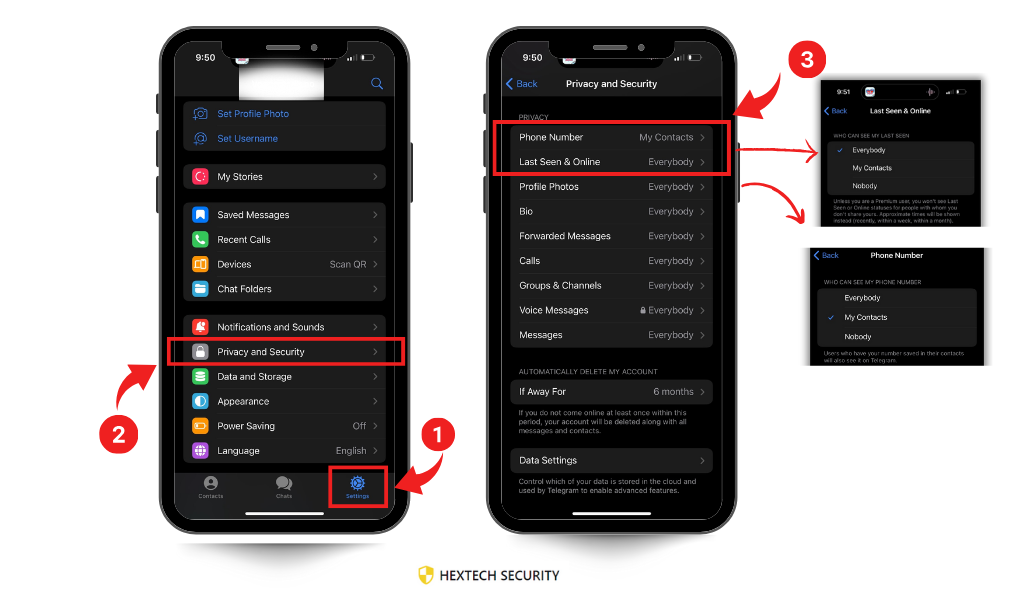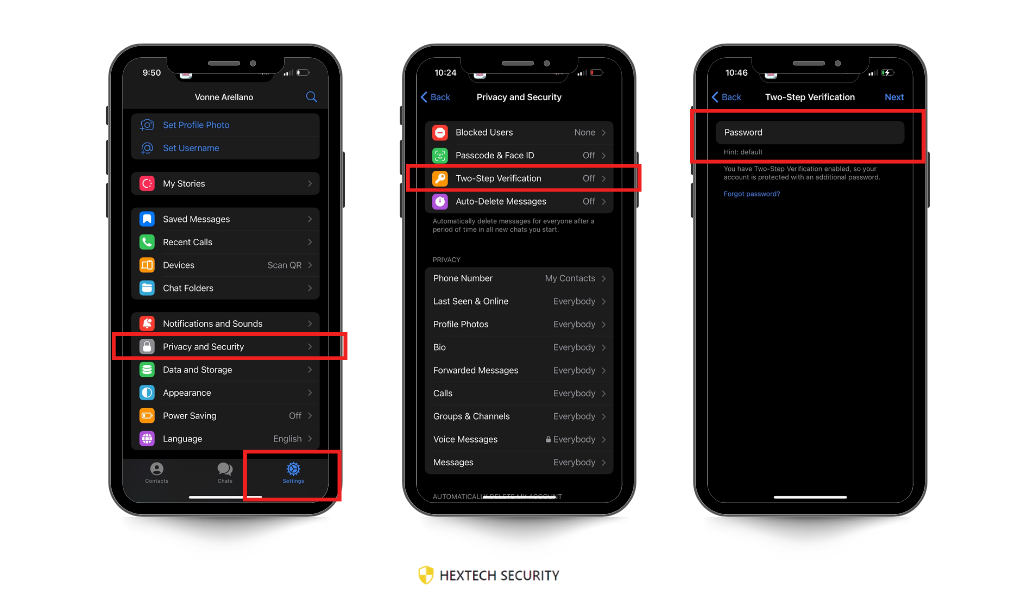Telegram, known for its encrypted messaging service, has gained massive popularity over the years. It’s a platform that prides itself on enhanced security and user privacy, attracting millions worldwide. However, this popularity has a downside: it has become a breeding ground for various scams. As users flock to Telegram for personal and business communications, scammers see a ripe opportunity to exploit its features for fraudulent activities.
Overview of the Growing Popularity of Telegram
Telegram stands out in the crowded field of messaging apps due to its robust security measures, like end-to-end encryption and self-destructing messages. These features, along with user-friendly interfaces, have led to a significant increase in its user base. From young adults to professionals, many are switching to Telegram for its promise of more secure and private conversations. The app’s ability to host large groups and channels also makes it a favorite for community building and broadcasting messages to a wide audience.
The Rise in Telegram-Related Scams
With its rising popularity, Telegram has unfortunately also seen a surge in scams. These scams range from simple deception to sophisticated frauds involving cryptocurrency, investment schemes, and personal data theft. The very features that make Telegram appealing – anonymity, encryption, and large groups – are also what scammers exploit. From impersonating legitimate entities to spreading false information in large groups, these scams are becoming increasingly sophisticated, making them harder to detect and avoid.
As Telegram continues to grow, understanding and recognizing these scams is crucial for protecting personal information and assets.
Understanding the Nature of Telegram Scams
In the world of online communication, scams are a persistent threat, and Telegram is no exception. Scams on this platform come in various forms, targeting unsuspecting users for financial gain or personal information. Understanding what constitutes a scam on Telegram is the first step towards protecting oneself. These scams can range from false investment opportunities to phishing attempts, all designed to deceive and exploit users.
Brief Explanation of What Constitutes a Scam on Telegram
A scam on Telegram typically involves deceptive practices aimed at stealing money, personal details, or both. Common tactics include:
- Phishing: Sending messages that appear to be from trusted sources to steal login information or financial details.
- Fake Investments: Promising high returns on investments in schemes like cryptocurrencies or business ventures.
- Impersonation: Pretending to be someone the user trusts, such as a friend or a reputable company.
- Lottery or Prize Scams: Convincing users they have won a prize, only to request payment or personal details.
Understanding these tactics is essential for Telegram users to identify and avoid potential scams.
The Appeal of Telegram for Scammers
Telegram’s features, while beneficial for privacy and security, also make it attractive for scammers. Here’s why:
- End-to-End Encryption: This makes it difficult to trace and monitor scammer activities.
- Anonymity: Users can create accounts with minimal personal information, allowing scammers to hide their real identity.
- Large Group Chats and Channels: Scammers can reach a vast audience with minimal effort.
- Bots: Automated accounts can be used to send out scam messages en masse.
These features, combined with a large and growing user base, make Telegram a prime target for scammers looking to exploit the platform’s capabilities for malicious purposes.
Common Types of Telegram Scams
As Telegram continues to gain users, the variety of scams on the platform has expanded. Being aware of these scams is crucial for users to protect themselves. Scammers have developed multiple methods to deceive users, ranging from exploiting personal information to offering fraudulent investment opportunities. Here, we outline some of the most common types of scams encountered on Telegram.
Phone Number Scams: How Scammers Exploit Phone Numbers
Phone number scams on Telegram often involve scammers obtaining a user’s phone number through deceptive means. Once they have a phone number, they can:
- Send spam or phishing texts.
- Use the number to gain access to personal accounts linked to the phone number.
- Impersonate the user or their contacts.
Protecting your phone number on Telegram and being cautious about sharing it with unknown contacts is crucial.
Crypto Scams: The Lure and Dangers of Cryptocurrency Scams
Cryptocurrency scams on Telegram tap into the hype around digital currencies. These scams might involve:
- Fake cryptocurrency investment opportunities promising high returns.
- Ponzi schemes disguised as legitimate crypto businesses.
- Requests for crypto payments in exchange for goods or services that are never delivered.
Always verify the legitimacy of any crypto-related offer received on Telegram.
Credit Card Fraud: Tactics Used in Credit Card-Related Scams
Credit card fraud on Telegram can occur in several ways, including:
- Phishing attempts to gather credit card information.
- Fake shops or services asking for credit card details.
- Promises of rewards or cashback in exchange for credit card information.
Never share your credit card details on Telegram with unverified contacts or businesses.
Social Security Number Theft: Risks of Sharing Personal Identifiers
Scammers might also target users’ Social Security Numbers (SSNs). They may:
- Pose as legitimate organizations or government bodies.
- Offer fake jobs or prizes that require SSN verification.
- Use SSNs for identity theft or illegal activities.
Be wary of any Telegram messages requesting your SSN or other sensitive personal information.
Impersonation Scams: The Role of Fake Profiles and Impersonation
Impersonation scams involve scammers creating fake profiles to:
- Pretend to be friends, family, or acquaintances.
- Mimic businesses, celebrities, or public figures.
- Gain trust and then request money or personal information.
Always double-check the identity of individuals or entities you interact with on Telegram.
Investment Schemes: Overview of Ponzi and Pyramid Schemes
Investment scams, particularly Ponzi and pyramid schemes, are prevalent on Telegram. These scams:
- Promise high returns with little to no risk.
- Pay earlier investors with the money from new investors.
- Collapse when there are not enough new investors.
Exercise caution and do thorough research before investing in any scheme proposed on Telegram.
Lottery and Prize Scams: False Promises of Winnings
Lottery and prize scams lure users with the promise of unexpected winnings. These scams may involve:
- Notifying users that they’ve won a lottery or prize.
- Asking for a fee or personal details to claim the winnings.
- Never actually providing the promised prize.
Remember, if an offer seems too good to be true, it likely is.
Each of these scam types exploits different aspects of human trust and curiosity. By being aware of these common scams, Telegram users can better protect themselves and their personal information from being compromised.
Telegram Scams Trends in 2024
In 2024, Telegram has become increasingly popular, but this popularity has also attracted various types of scams. The key scams to be aware of on Telegram include:
- Crypto Investment Scams: These scams involve promises of guaranteed returns on crypto investments. Scammers often create fake crypto exchanges and show victims falsified charts to demonstrate investment growth. Once a victim tries to withdraw their profits, the scammers disappear with the funds.
- Phishing with Telegram Bots: Scammers use sophisticated bots on Telegram for phishing attacks. These bots can imitate legitimate businesses or banks, tricking users into giving away personal information, bank account details, or security codes.
- Tech Support Scams: Fraudsters may create accounts impersonating tech support agents. They often reach out to users with offers to resolve tech issues but ultimately aim to extract sensitive information or payments for services.
- Bitcoin and Other Cryptocurrency Giveaways: Scammers promise free prizes or giveaways, often requiring victims to provide banking information or pay a fee to receive the prize, which never materializes.
- Lookalike Telegram Admin Accounts: These accounts mimic legitimate ones and often contact users directly, pretending to offer assistance but actually aiming to gain access to accounts or personal information.
- Classiscam Schemes: In these scams, fake classified ads are created, and when users respond, they are directed to phishing sites where they are tricked into providing personal and financial information.
Telegram fraud is a rising concern due to the app’s ease of use, anonymity, and encryption, making it a preferred platform for various cybercrimes, including financial scams, phishing, malware distribution, and romance scams. Criminals use Telegram to distribute malware, sell leaked credentials, and coordinate fraud schemes.
To stay safe, be cautious of too-good-to-be-true offers, verify the identity of people or companies you communicate with on Telegram, and avoid sharing personal information or clicking on suspicious links.
Recognizing Red Flags
Being able to recognize red flags on Telegram is key to avoiding scams. Scammers use various tactics to trick users, but there are often clear signs that something is amiss. By staying alert and knowing what to look for, users can greatly reduce their risk of falling victim to these fraudulent schemes. Here, we outline how to identify suspicious messages and profiles, which are common indicators of a scam.
Identifying Suspicious Messages and Offers
Suspicious messages on Telegram can take many forms, but they often share common characteristics. Look out for:
- Unsolicited Offers: Be cautious of messages that offer deals, prizes, or rewards, especially if you did not initiate contact.
- Urgency: Scammers often create a sense of urgency, pressuring you to act quickly without giving you time to think or verify the information.
- Requests for Personal Information: Be wary of any message asking for sensitive information like passwords, financial details, or personal identification numbers.
- Poor Grammar and Spelling: Messages full of errors can be a sign of a scam.
- Too-Good-To-Be-True Promises: Offers that seem overly beneficial or promise high returns with little risk are often scams.
By being mindful of these signs, you can better judge whether a message is legitimate or a potential scam.
How to Spot a Scammer’s Profile
Scammer profiles on Telegram might look real at first glance, but there are usually giveaways. Here’s what to look out for:
- Profile Completeness: Scammers often have incomplete profiles with minimal information and few or no posts.
- Profile Picture and Name: Be cautious if the profile photo looks generic or if the name doesn’t match the photo or the context.
- Account Age: Newly created profiles with little to no history can be a red flag.
- Friend Requests from Strangers: Be cautious about accepting requests from people you don’t know.
- Inconsistencies: Look for inconsistencies in their stories or information they provide.
Knowing how to identify a scammer’s profile can help you avoid engaging with potential scammers, keeping your Telegram experience safe.
Being vigilant and aware of these red flags can help you navigate Telegram more safely, protecting you from the diverse scams that plague the platform. Remember, if something seems off, it’s always better to err on the side of caution.
Preventive Measures and Best Practices
In the digital age, where scams are rampant, taking preventive measures and following best practices is essential for safe online communication. This is especially true on platforms like Telegram, where the blend of anonymity and vast reach can be misused by scammers. By adopting a proactive approach to security, users can significantly reduce their risk of falling prey to scams. Here, we discuss key strategies to keep personal information secure, ensure safe financial transactions, and utilize Telegram’s security features to your advantage.
Keeping Personal Information Secure
Securing your personal information on Telegram requires a combination of cautious behavior and using the app’s privacy features effectively. Here’s how you can do it:
- Limit Sharing of Sensitive Data: Be mindful of what you share in chats or groups. It’s best to avoid discussing details like your home address, phone number, or personal identification numbers. Remember, once information is shared, it’s hard to take back.
- Privacy Settings: Telegram allows you to control who can see your phone number and when you were last online. To adjust these settings, go to ‘Settings’ > ‘Privacy and Security’ > and then tap on ‘Phone Number’ or ‘Last Seen & Online’. Here, you can choose options such as ‘Nobody’ or ‘My Contacts’ and even add exceptions.

- Be Cautious with Strangers: If an unknown contact reaches out to you, be wary of sharing any personal details with them. If a conversation feels suspicious or uncomfortable, it’s okay to block or report the user.
- Regularly Update Your Passwords: Create strong passwords that are difficult to guess, combining letters, numbers, and symbols. Change your password periodically for added security. To change your Telegram password, go to ‘Settings’ > ‘Privacy and Security’ > ‘Two-Step Verification’ and then follow the instructions to set a new password.

- Enable Two-Step Verification: This feature adds another layer of security to your account. To enable it, go to ‘Settings’ > ‘Privacy and Security’ > ‘Two-Step Verification’. Here, you’ll be prompted to create a password. If someone tries to access your Telegram account from a new device, they’ll need this password in addition to the SMS code.

By following these steps, you can significantly enhance the security of your personal information on Telegram. Remember, the key to staying safe online is a mix of using available security features and being mindful of your digital interactions.
Safe Practices for Financial Transactions
Ensuring safe financial transactions on Telegram involves being vigilant and using secure methods. Here’s how you can do this:
- Verify the Legitimacy: Before making any financial transaction, research the person or company you’re dealing with. Check their official website, read reviews, and look for any online presence that confirms their legitimacy.
- Avoid Sharing Financial Details: Never disclose your credit card numbers, bank account details, or any financial passwords over Telegram. If you need to provide payment, do so through official and secure channels outside of the app.
- Use Trusted Payment Methods: For transactions, rely on established and secure payment platforms like PayPal or your bank’s official payment service. Avoid direct money transfers to individuals unless you are certain of their identity and trustworthiness.
- Beware of Investment Schemes: Be skeptical of investment opportunities presented on Telegram, especially those promising unrealistic returns. Always consult with a financial advisor or conduct thorough independent research before investing.
- Report Suspicious Activity: If you come across a scam or dubious financial activity, report it immediately to Telegram and, if relevant, to your bank or financial service provider.
Using Telegram’s Security Features Effectively
To enhance your safety on Telegram, it’s crucial to utilize the app’s security features. Here are steps to do so:
- End-to-End Encryption: For private conversations, use Telegram’s “Secret Chat” feature, which ensures end-to-end encryption. You can start a Secret Chat by going to a contact’s profile and selecting “Start Secret Chat.”

- Regularly Review Active Sessions: Regularly check for unknown devices or sessions. Go to ‘Settings’ > ‘Devices’ > ‘Active Sessions’. Here, you can see all devices that are logged into your account and end sessions that you do not recognize.

- Enable Passcode Lock: Protect your Telegram app with a passcode. To set this up, go to ‘Settings’ > ‘Privacy and Security’ > ‘Passcode Lock’ and enable it. You’ll be prompted to create a passcode which will be required every time you open the app.

- Be Alert for Phishing Bots: Watch out for bots or users asking for sensitive information. Remember, legitimate companies or organizations will not ask for personal details or passwords through Telegram.
- Educate Yourself: Stay updated with the latest security features and updates provided by Telegram. You can find this information on Telegram’s official blog or help center.
By implementing these preventive measures and best practices, you can enjoy a safer experience on Telegram, keeping your personal and financial information secure from scammers. Remember, staying informed and cautious is your first line of defense against online scams.
What to Do If You Fall Victim to a Scam
Falling victim to a scam can be a distressing experience. However, taking immediate and appropriate action can help mitigate the damage and prevent others from being scammed in a similar way. Knowing the steps to take after identifying a scam and understanding how to report it within Telegram and to the relevant authorities are crucial in handling such situations effectively.
Immediate Steps to Take After Identifying a Scam
If you realize you’ve been scammed on Telegram, act quickly:
- Cease All Communication: Stop any further interaction with the scammer. Do not respond to their messages, and avoid giving them any more information.
- Secure Your Account: Change your passwords and review your security settings on all related accounts, not just Telegram.
- Document Everything: Take screenshots of the scammer’s profile, messages, and any transactions or interactions. This documentation can be crucial for reports to authorities or financial institutions.
- Contact Financial Institutions: If the scam involved financial transactions, contact your bank or credit card provider immediately. They can help secure your accounts and, in some cases, reverse fraudulent transactions.
- Seek Legal Advice: Consider consulting a legal professional, especially if significant sums of money or sensitive personal information were involved.
Reporting Channels Within Telegram and to Authorities
Reporting the scam both within Telegram and to the appropriate authorities is important:
- Report on Telegram: You can report a user or bot on Telegram by going to their profile, clicking on the three dots (or gear icon), and selecting ‘Report’. Choose the reason for reporting and provide any additional information that might be helpful.
- Contact Local Authorities: Report the scam to your local law enforcement. Provide them with all the documented evidence you have gathered.
- File a Complaint with Online Fraud Agencies: In many countries, there are specific agencies or online portals where you can report internet fraud and scams. Examples include the Internet Crime Complaint Center (IC3) in the United States or Action Fraud in the United Kingdom.
- Inform Consumer Protection Agencies: Reporting to consumer protection agencies can help warn others about the scam.
By taking these steps, you can play a crucial role in stopping the spread of scams and potentially assist in bringing the perpetrators to justice. Remember, your response to being scammed is as important as the measures you take to prevent scams.
Raising Awareness and Education
In the fight against scams, particularly on platforms like Telegram, awareness and education are our strongest tools. By spreading knowledge about the nature of scams and how they operate, we can empower individuals to protect themselves and others. It’s not just about avoiding scams; it’s about creating a community that is collectively vigilant and knowledgeable. This section focuses on the importance of educating ourselves and others about scams and the resources available for staying up-to-date with the latest scamming tactics.
The Importance of Spreading Knowledge About Scams
Educating yourself and others about scams is vital in preventing them. Here’s why it matters:
- Builds a Safer Community: When more people are aware of scams, the community becomes safer. Scammers find it harder to find victims in well-informed groups.
- Empowers Individuals: Knowledge is power. Understanding the common signs of a scam enables individuals to make informed decisions and take control of their online safety.
- Prevents Financial Loss: By knowing how scams work, people are less likely to fall for them, protecting their finances.
- Supports Vulnerable Groups: Some groups, like the elderly or those new to digital platforms, might be more susceptible to scams. Education can provide these groups with the tools they need to stay safe.
Resources for Staying Informed About New Scamming Tactics
Staying updated with the latest scamming tactics is crucial. Here are some resources that can help:
- Online Safety Websites and Blogs: Websites like StaySafeOnline or the Cybersecurity & Infrastructure Security Agency (CISA) offer up-to-date information on the latest online scams.
- Government Alerts: Many governments issue regular alerts on new scams. Signing up for these alerts can keep you informed.
- Social Media and News Outlets: Follow trusted news sources and cybersecurity experts on social media for real-time updates on emerging scams.
- Community Forums: Online forums and groups, including those on Telegram, can be valuable resources for sharing experiences and warnings about new scam tactics.
- Educational Workshops and Webinars: Participate in workshops or webinars focused on cybersecurity and scam prevention.
By utilizing these resources and spreading awareness, we can create a more secure online environment and significantly reduce the impact of scams. Remember, staying informed and sharing knowledge is a continuous process that benefits everyone in the digital space.
Conclusion
In the ever-evolving landscape of online communication, staying vigilant and informed is vital, particularly on platforms like Telegram where scams are increasingly sophisticated. This guide has provided essential insights to identify, avoid, and respond effectively to various scams. Understanding these deceptive tactics, recognizing warning signs, and employing safe practices are key to safeguarding your digital interactions. The power of awareness and education in building a resilient community against scams cannot be understated. By keeping yourself updated and sharing your knowledge, you contribute significantly to a safer online environment. Remember, being alert and cautious is your best defense in the digital world. As we collectively adapt to these threats, our online experiences become safer and more secure, emphasizing the importance of a cautious yet proactive approach to online safety.








